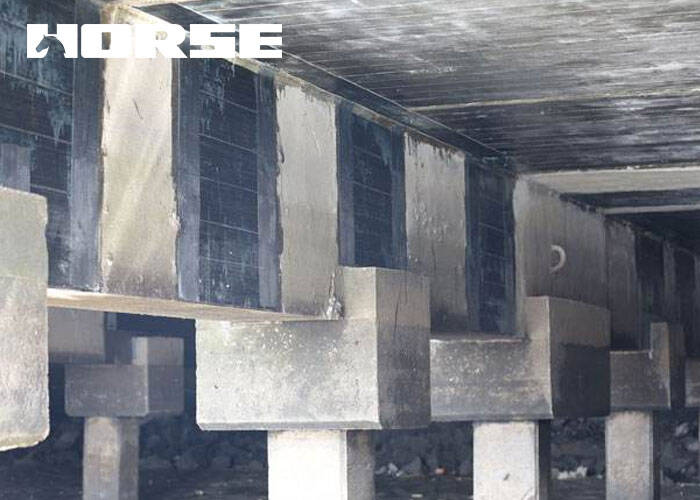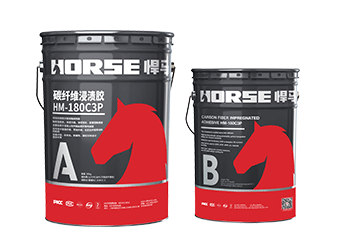Solutions
Horse Construction offers full range of structural strengthening materials with technical supports, documentation supports, products supports, project supports.
wharf strengthening reinforcement

1 Structural strengthening and reinforcement projects
Now we analyze and discuss the reinforcement and reconstruction methods of some typical wharfs in Tianjin Port and Shanghai Port.
1.1 The previous reconstruction and reinforcement methods
The traditional reinforcement method is usually to dismantle the old superstructure of the wharf that does not meet the larger load-bearing requirements, use the original pile foundation, or take measures to supplement piles, and newly pour the upper concrete structure. The cast-in-place beams, prefabricated longitudinal beams and panels are used to form a whole through the cast-in-place surface layer. Although this transformation method can improve the current situation of the wharf and increase the carrying capacity of the wharf. However, it has a greater impact on the loading and unloading production in the port area, which is manifested in complex construction conditions and restricted construction space. Taking the high-piled wharf as an example, the damaged components are mainly below the wharf surface. The reinforcement work requires the construction of a platform on the water or the use of a square barge, which results in a narrow working surface, mechanized construction cannot be carried out, and work efficiency is reduced.
In addition, compared with other reconstruction methods, the maintenance cost is relatively large, which is manifested in the poor construction environment. Since the construction is carried out in the port area, it will be affected by other berth operations. The transfer of construction vessels and the selection of construction machinery will increase the corresponding cost. These factors will be reflected in the maintenance cost. Therefore, this traditional reinforcement and transformation method can only be used under certain conditions, and suitable conditions will bring good economic benefits.
1.2 Application of structural bonding steel technology in wharf strengthening
Structural bonding steel reinforcement is a reinforcement technology for building structural engineering. Special structural adhesives are used to paste steel plates on the surface of reinforced concrete structures so that the steel plates and concrete components work together to achieve the purpose of strengthening and enhancing the strength and rigidity of the original structure. Construction technology and operation requirements of bonded steel reinforcement:
1) Treat the concrete surface defects first, and the cracks need to be grouted. Damaged conditions such as peeling, bar-exposing, etc. require rebar derusting and repairing with repair materials. Then chisel the surface of the concrete to be repaired, and finally remove the surface dirt and dust and wipe it with acetone.
2) Polish the sticking surface of the steel plate to remove rust, and wipe it clean with acetone.
3) Configure the structural adhesive and curing agent according to the ratio of the configuration instructions, and stir until there is no color difference, no bubbles, and fully uniform structural adhesive.
4) Spread the configured structural glue evenly on the steel plate and concrete surface to be pasted, then paste the steel plate on the concrete surface, and fix the pressure with expansion bolts and angle irons through the reserved holes.
5) Apply anti-rust paint on the surface of the steel plate.
For example, the reinforcement and reconstruction project of a wharf in Shanghai Port that was built in the early 1980s adopted steel bonding technology. After inspection and reinforcement of the wharf beams, if the beams are strengthened with steel bonding technology, their bearing capacity can be restored, and the wharf can still meet the requirements of the design bearing capacity and specifications. The on-site reinforcement was carried out in accordance with the construction technical requirements. From the current use situation, the effect of the external steel plate in restraining cracks and limiting crack propagation is obvious. However, since the pasted steel plate is in the water level fluctuating area for a long time, it is necessary to frequently strengthen the repair and maintenance of the steel plate, and the later cost is higher.
1.3 Application of carbon fiber cloth reinforcement technology in wharf reconstruction
One-way carbon fiber cloth reinforcement and repair structure technology is a new type of structure reinforcement technology that has been popularized and applied in recent years. It uses resin bonding materials to stick unidirectional carbon fiber cloth on the surface of concrete components, and uses the good tensile strength of carbon fiber materials to achieve the purpose of enhancing the bearing capacity of the components.Construction technology and operation requirements:
1) Surface pretreatment: firstly infuse with epoxy resin, seal the cracks, and make them hardened. Use a polisher to smooth the concrete within the area of the carbon fiber reinforced area, and chamfer the corner paste and polish it into an arc shape for smooth transition. For the damaged area of the concrete surface around the crack repair area, level it with repair materials after chiseling.
2) Binder configuration: The configuration of binder and bonding primer must be strictly in accordance with the instructions for use and related test ratios. The utensils and tools must not be stained with water and oil. The agitator should be stirred at a low speed and fully mixed.
3) Glue and stick carbon fiber cloth: After removing the dust on the concrete surface, wipe it with acetone, and evenly coat a layer of primer epoxy resin, and then paste the first layer of fiber cloth, which is required to be smooth and straight, and meet the requirements of lap length . Then use a roller brush to paint, so that there are no bubbles or hollows in the fiber cloth. If you need to paste the second layer of carbon fiber cloth, you need to wait for the previously applied resin to have a certain hardness before proceeding. The construction steps are the same as before.
4) After the construction is completed, determine whether protection is needed according to the environment of the carbon fiber cloth. Because carbon fiber cloth is more sensitive to ultraviolet light, if it is exposed to strong ultraviolet light, mortar is needed to protect the surface.
For example, in the reinforcement project of No. 3 pier and abutment of Petrochemical Wharf in Nanjiang Port District of Tianjin Port, carbon fiber cloth was used to reinforce the damaged foundation piles.
In order to strengthen it scientifically and rationally, a seminar on maintenance methods was specially held. The meeting conducted a detailed discussion and analysis on the location and damage characteristics of the pier. If the traditional concrete exterior reinforcement is used, the external shape of the piers and foundation piles will be greatly changed. In addition, there are 4 foundation piles under the pier, and the volume of the foundation piles will exceed the range of the pier and abutment, which will affect the berthing of the ship. Therefore, the use of external concrete reinforcement is not an acceptable method. If the method of supplementing new piles is adopted, the construction space is insufficient, and the upper steel structure needs to be removed, which affects production and is not economical. Finally decided to use unidirectional carbon fiber for reinforcement.
After on-site investigation and testing, specially purchased resin that can quickly harden in a humid environment and matching Horse carbon fiber cloth. A construction team specializing in carbon fiber reinforcement was selected to make full use of the tide time, rationally arrange the construction sequence, and strictly follow the product instructions for construction. So far, the project has been completed for 4 years with good results.
2 Comparison and summary of reinforcement methods
Adopting structural bonding steel reinforcement technology, the structural strength and rigidity can meet the design requirements. However, construction is difficult and technically demanding, and a professional team is required to carry out the construction. The use of unidirectional carbon fiber reinforced concrete technology can be applied to more complex parts such as foundation piles and beams of the wharf. It has quite flexible adaptability and has a good reinforcement effect on the durability and safety of the structure.
In short, the construction speed of structural carbon fiber cloth reinforcement is fast, the work efficiency is high, and the construction can be completed without stopping production and less affecting the loading and unloading operations. The construction process is relatively simple, the construction occupies a small space, and the impact on the surrounding environment is small. After the completion of the reinforcement, the appearance of the structure is basically unchanged, and it is relatively light and adds a slight increase to the structural weight. This not only greatly reduces the prominent contradiction between terminal production and on-site construction, but also does not increase the burden of the original structure, which can ensure both economic efficiency and structural reliability.
3 Conclusion
In view of the current production status of different parts and berths of the wharf, different new technologies and new materials are introduced and used in the repair of the old wharf structure, which not only has low investment and short construction period, but also has good quality and quick results. Structural bonding steel technology and carbon fiber reinforced concrete technology transplantation Tianjin Port, Shanghai Port wharf repair is still innovative. However, since the reinforced and repaired components are often affected by water level fluctuations and ultraviolet radiation, the final effect needs to be carefully maintained and long-term observation by the terminal manager.
You can find anything here you are in need of, have a trust trying on these products, you will find the big difference after that.

High strength, unidirectional carbon fiber wrap pre-saturated to form a carbon fiber reinforced polymer (CFRP) wrap used to strengthen structural concrete elements.

Good impregnation carbon fiber adhesive for applying carbon fiber reinforced polymer(CFRP) wrap for structural strengthening

High strength carbon fiber reinforced polymer (CFRP) strip / laminate / plate for structural strengthening and concrete repair